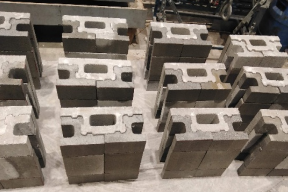Yehia Aboziada, Belal AbdelRahman, and Khaled Galal
i Ph.D. student, Department of Building, Civil and Environmental Engineering, Concordia University, 1515 St. Catherine West, Montreal, QC, Canada, Yehia.aboziada@mail.concordia.ca
ii Postdoctoral Fellow, Department of Building, Civil and Environmental Engineering, Concordia University, 1515 St. Catherine West, Montreal, QC, Canada, belal.abdelrahman@concordia.ca
iii Professor, Department of Building, Civil and Environmental Engineering, Concordia University, 1515 St. Catherine West, Montreal, QC, Canada, khaled.galal@concordia.ca
ABSTRACT
Masonry construction has been a reliable method that offers cost-effectiveness and strength for decades, particularly mortarless block systems. These systems have gained popularity due to their reduced cost and construction time compared to conventional masonry. Understanding the mechanical properties of the drystack interlocking masonry (DSIM) blocks is important for designing masonry structures, particularly those subjected to horizontal forces such as wind. Among these properties is the bond strength, which is considered the key parameter in the design. Numerous studies and standards investigated and suggested different methods of testing to evaluate the tensile bond strength between the blocks. This paper presents an experimental investigation focused on determining the flexural bond strength normal to bed joints in a specific dry stacking system known as a Sparlock block. The test was conducted to assess the bond strength using a bond wrench according to ASTM C1072-22. The effect of adding grout to the empty cells was studied. The findings were compared to the allowable bond stresses stated in CSA 304-24 and other results from the literature. The experimental results showed that the tensile bond strength of the Sparlock blocks is comparable to that of the conventional block, as the interlocking mechanism compensates for the missing mortar layer between the blocks. Also, the flexural bond strength obtained from the joint of the Sparlock grouted prism was 2.86 times greater than that of the ungrouted ones.
KEYWORDS: Masonry, Mortarless, bond Wrench, Interlocking, Flexural strength.
034-Aboziada.pdf



